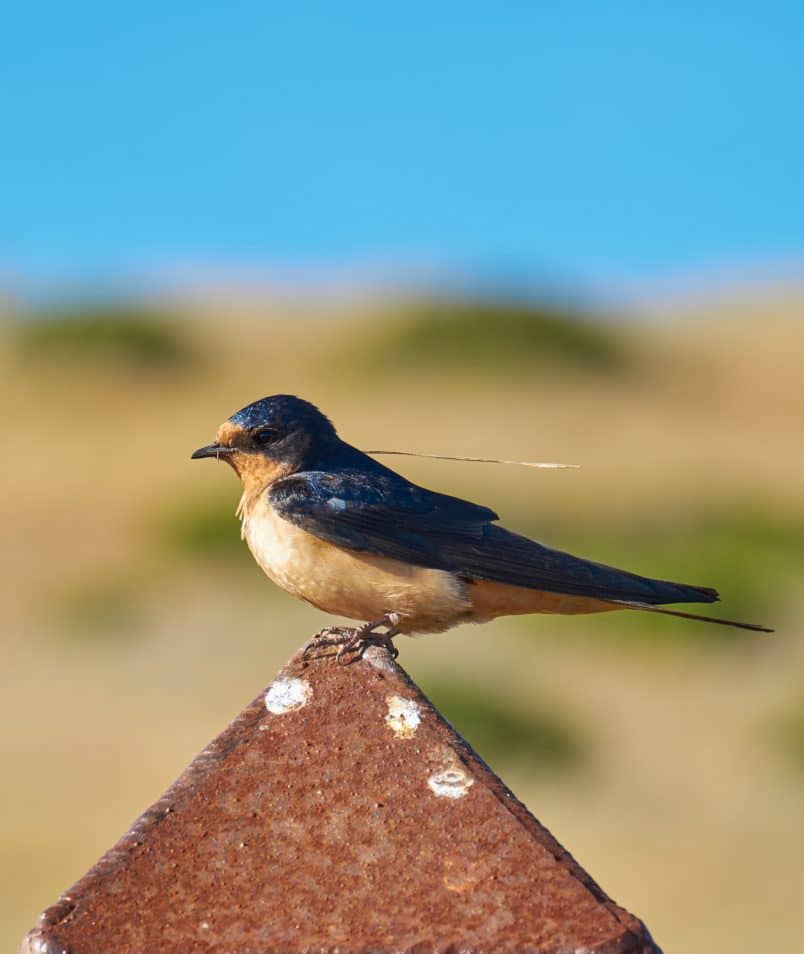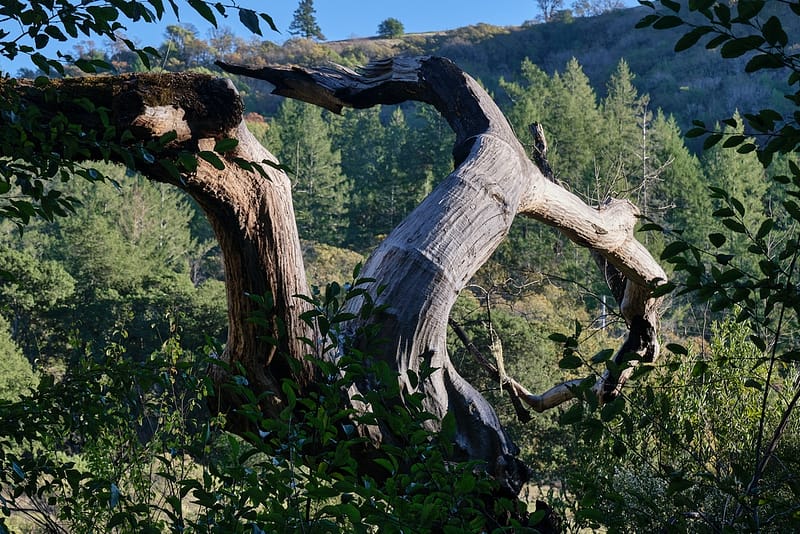I’ve been watching the Acorn Woodpeckers recently, and if you haven’t been introduced, they’re busy, red-capped raucous apparitions, flitting and darting in the woods. They eat insects and other things, and — did the name give it away? — also acorns.
In a good year acorns are plentiful in the native oak woodlands here. And acorns are packed with fats and carbohydrates, an excellent food. So, not surprisingly, every hungry thing from insects to bears to deer and rodents and other birds (and humans once, too) are quick to elbow in and grab a share.
The black bear and burrowing squirrels deal with the glut by packing bellyfulls away as stored fat and then sleep it off for months. Not an option for the woodpecker.
It needs — a plan, a strategy.
Somehow long ago, this particular type of woodpecker — it’s the only one who does — found the sturdy standing trunks and branches of dead oak trees offered a perfect solution. Acorn granaries.
Even watching them at work, it’s hard to believe — the woodpeckers are engineering marvels with wings. Their granary trees can stand for decades, and once established by a local flock are used over and over, year after year. They defend them aggressively, to the death.
Creating or expanding a new granary involves a level of craftsman precision that’s hard to imagine in a bird. To start, they use their heads and sharp beaks to drive holes in the deadwood, hammering, removing chips, straight in and deep.
It’s not random pecking. They’re not simply digging a hole. They’re shaping a hole til it’s just barely larger than an acorn. To stay securely stored, the acorns have to be wedged in: the holes have to be deep enough and lodge snugly. So the bird eyeballs a hole and the nut and uses precise effort with its beak to get them tightly packed for the winter, and to prevent them from being stolen.
Then, trip after trip, the woodpecker flock gathers acorns. At the tree, the collected acorns are sized into the empty holes — the woodpeckers will turn them and push and pull and try different empty holes, until just the right fit is found, for each acorn. They’re tapped in, tight.
But wait…this doesn’t mean their work is done. During the winter, the birds must continue to actively manage their pantry — as the acorns dry and shrink, the birds will recheck and move the acorns around to new holes, just to keep them snugly fit.
Over time one of these large trees can accumulate hundreds, even tens of thousands of holes. A wild larder, carefully tended. Bounty preserved.
Unfortunately, the once vast forests of California’s oaks are shrinking, cut by humans, encroached by cities, and victims to drought and a changing climate, down to a bare fraction of their once great stands. The woodpeckers carry on, for now. But with less, in spite of their monumental effort and heroic commitment.
On the way to the fridge, I’m reminded — we’re never too far from a hungry winter, really, so what we have is truly something to be thankful for. And maybe, we’re just a little bit smug about our own cleverness.
So when the feasting is done, lift a cheer, not just for the bounty we enjoy, but for all the others who work with diligence and enterprise, unseen, to keep their flocks well fed.



